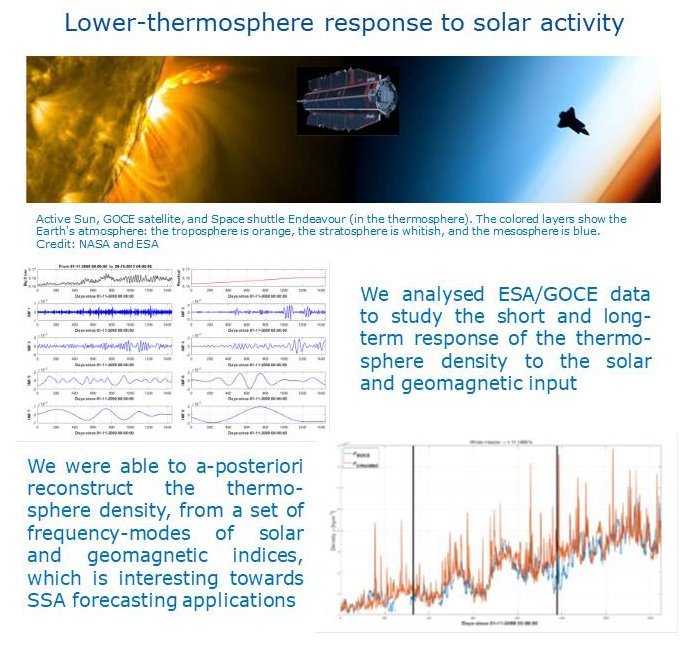Papers from SWICo members
Alberto Bigazzi, Carlo Cauli, and Francesco Berrilli
The thermosphere is a layer of the high Earth atmosphere which extends into the Low Earth orbit (LEO) region. It is extremely sensitive to the activity of our star, especially to solar radiation in X-rays and ultraviolet. When the sun is at a minimum of activity, as in these years, its X-rays and UV emission is reduced and the thermosphere cools and collapses. On the contrary, when solar activity increases the thermosphere expands and penetrates into circumterrestrial space.

Since about 70% of the current operative satellites are in LEO, the expansion of the thermosphere increases drag on satellites and, changing their orbits, increases the need for orbital maneuvers with effects on orbital station-keeping and satellite life-time. The same effect is present in the case of the space debris (over 70% of the debris are in LEO).
By analyzing more than four years of data from extremely precise accelerometers, capable of measuring small accelerations (1 part out of 10 million of Earth’s gravity acceleration), on board the ESA/GOCE mission we connected the density variations of the thermosphere to the solar and geomagnetic activity. In order to model the density of the thermosphere to the solar and magnetospheric signals, we used the frequency modes that have the greatest impact on the thermosphere’s density.
Publication: Bigazzi A, Cauli C., Berrilli F., 2020, Annales Geophysicae, Volume 38, Issue 3, 2020, pp.789-800, DOI: 10.5194/angeo-38-789-2020 https://angeo.copernicus.org/articles/38/789/2020/angeo-38-789-2020.pdf
